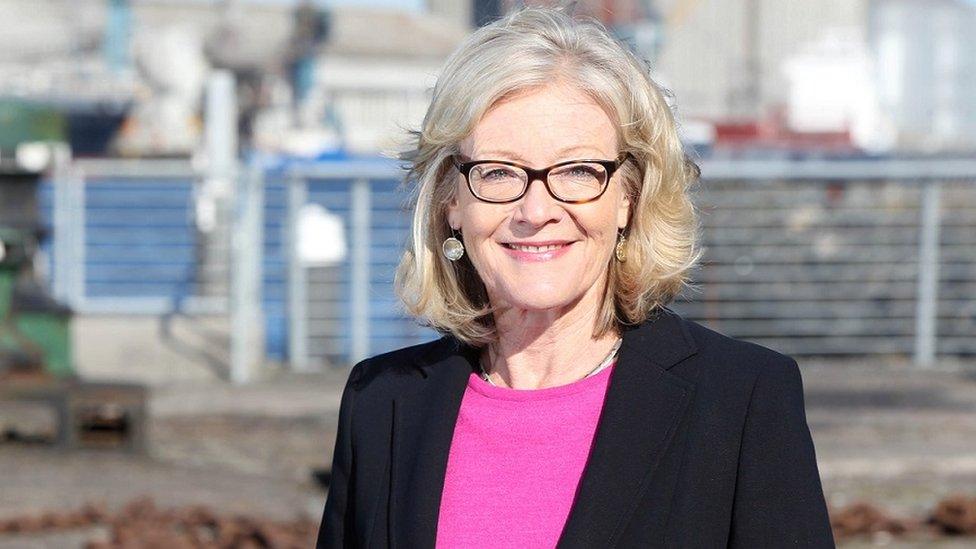Wendy Austin: 'Women still face more barricades at ДѓЯѓДЋУН'
- Published

Wendy Austin's remarkable ДѓЯѓДЋУН career has spanned more than four decades.
Influenced by her dentist dad, who had flown Spitfires in World War Two, and a very determined librarian mother, she has blazed a trail for women in the media.
Now, she's stepping down from her role, along with three other familiar faces on the Northern Ireland's airwaves.
She has spoken to Talkback's William Crawley about her career.
"It's been an interesting and, for the most part, a very fun journey," she says.
Wendy gave up studying law at Queen's University, Belfast, to become a junior reporter - having been impressed by the journalists covering the early years of the Troubles.
She worked at the East Antrim Times and later at the Belfast Telegraph, but says she was treated as "the girl" and given the soft, human interest stories.
But she still remembers the first murders she covered - a young couple who had been shot in east Belfast.
"You're looking at that situation and thinking: 'In other circumstances it could have been me, it could have been somebody I knew'."
Wendy first dipped her toe into broadcasting in 1976 at Downtown Radio, but was quickly headhunted by the ДѓЯѓДЋУН.
The corporation had an interesting way of saving money when paying its freelancers, she explains.
"You got paid a certain amount depending how long the report was. If it was over three minutes you got paid more, so they used to try to keep them to two minutes, 40 seconds."
She progressed to presenting Radio Ulster's Good Morning Ulster programme, and then Wendy broke into national TV on Breakfast Time when she co-presented with Frank Bough in his famous woolly jumpers.
But it wasn't as glamorous as it seemed. Wendy spent most of her time as co-presenter in a stuffy "shoebox" at Broadcasting House in Belfast.
Wendy is often held up as a role model, as the journalist who broke the glass ceiling for female broadcasters in Northern Ireland.
But she thinks there is still a lot to do.
She cites a report in 2017 that showed a pay disparity between men and women working at the ДѓЯѓДЋУН.
"There have been enormous changes, but there are definitely still more barricades for women in the workplace than there are for men," she says.
A ДѓЯѓДЋУН spokesperson said: "When we first published figures for talent paid over ТЃ150,000 in 2016/17, there was a 75:25 split between men and women on the list.
"The projection for 2019/20 is now 55:45. During the same period our gender pay gap has fallen from 9.3% to 6.7%.
"Across the ДѓЯѓДЋУН, pay differences between women and men are 3% or less at every single band.
"This isn't the end of the journey - there is clearly more to do, but we have made significant progress."
You can hear Wendy Austin talk about her ДѓЯѓДЋУН career on Talkback on ДѓЯѓДЋУН Radio Ulster at 12:00 GMT on Christmas Eve.